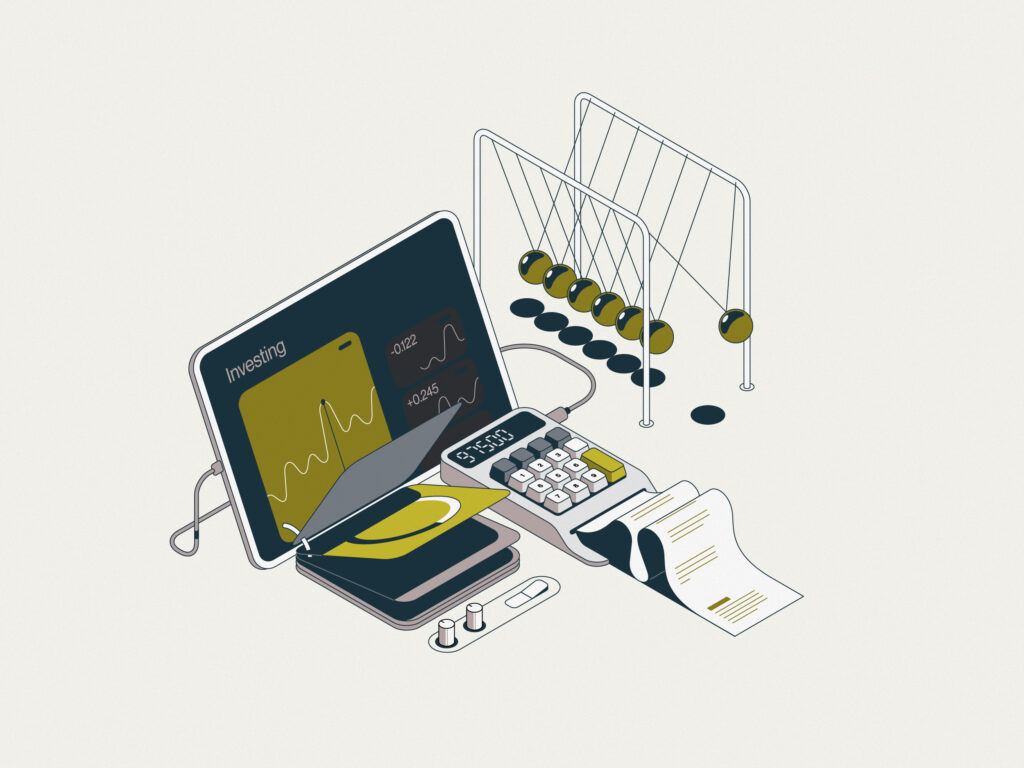In 2009, Jon Stewart interviewed Jim Cramer, the famous CNBC financial news commentator (first portion of the interview is here). When Stewart pressed him on his contradictory and often erratic antics Cramer said, “Look, we’ve got 17 hours of live TV a day to do.” Just think about that for a moment. 17 hours of live TV to fill! In between gold and crypto commercials, they have a 17-hour void to fill that bridges the gap between news, entertainment, and some actual financial analysis.
This is not meant to be a hit piece targeting the financial news networks, but I do have a court-side seat into the effects that the financial news networks have on client behavior. Watching this week and the same buzzwords and phrases constantly surface: “Stocks Tumble!” or “Global Markets Sell-off!” When seen on financial news networks, these headlines are often shown in fire-engine red as they blaze across our screens. This is fear mongering at its best. If you felt a guttural reaction to such headlines…they’re working. If you then opened your portfolio to execute a few trades out of fear…then you became a victim. You see, it’s hard to keep our attention for 17 hours a day, but sowing continual fear is one way.
I love the Robert Mankoff cartoon from the October 12, 1981 issue of the New Yorker, because the commentary rings true today. 17 hours of live television is a long time to fill.
The financial news networks are not fiduciaries. A fiduciary is a person or organization that acts on behalf of another person or persons, putting their clients’ interests ahead of their own, with a duty to preserve good faith and trust. Being a fiduciary thus requires being bound both legally and ethically to act in the other’s best interests. At Howe & Rusling, we are a fiduciary, and we aim to create partnerships that can support the weight of truth.
Maybe what would make us better investors is if we turned the volume down, minimized the noise, and accepted that market corrections can and will happen…regularly. As Americans, we collectively have short memories. We forget that an equity risk premium exists. Stocks are risk assets that generate higher returns than bonds or cash because they’re expected to be more volatile at times!
Borrowing some excellent stats from Ben Carlson’s A Wealth of Common Sense blog:
– The average peak-to-trough drawdown for the S&P 500 in a given calendar year since 1928 is around -16%.
– There have been 53 double-digit drawdowns overall in this time frame.
– The average loss for those corrections is -23%, lasting more than 200 days from peak to trough.
– Over the past 93 years the U.S. stock market has fallen 20% or worse on 21 different occasions. That’s once every 4-and-a-half years.
– It’s fallen 30% or worse 13 times or one out of every 7 years.
If you measure your time horizon in years and decades, rather than trading days, you learn to live and cope with the volatility that comes with being an equity investor. Even if you happen to nail the timing on the next correction, you’ll likely never be able to do it again. So how do we combat this? We combat this by understanding our own risk tolerances, remaining diversified, and owning quality assets.
It’s also important to remember the anecdotes set forth by Bob Farrell. Bob Farrell, a 90-year-old retiree in Florida, is hardly a household name. But on Wall Street, Farrell witnessed nearly every bull and bear market since 1957, when he joined Merrill Lynch as an analyst and embarked on what became a 45-year career with the firm. We think his famous anecdotes are worth revisiting today:
1. Markets tend to return to the mean over time.
2. Excesses in one direction will lead to an opposite excess in the other direction.
3. There are no new eras – excesses are never permanent.
4. Exponential rapidly rising or falling markets usually go further than you think, but they do not correct by going sideways.
5. The public buys the most at the top and the least at the bottom.
6. Fear and greed are stronger than long-term resolve.
7. Markets are strongest when they are broad and weakest when they narrow to a handful of blue-chip names.
8. Bear markets have three stages – sharp down, reflexive rebound, and a drawn-out fundamental downtrend.
9. When all the experts and forecasts agree – something else is going to happen.
10. Bull markets are more fun than bear markets.
Remember fear and greed can cloud our emotions and lead to poor decisions such as selling at the bottom and buying at the top (Rule 5). The pendulum usually swings between extreme optimism and extreme pessimism, but the truth is usually somewhere in the middle near the mean (Rule 1). The pendulum swing is driven by excesses which in turn drive excesses in the opposite direction (Rule 2) reminding us that there are no new eras (Rule 3).
As writer Nick Maggiulli says: “This is how to not panic. You know history. You understand the risks. And, most importantly, you know yourself. Then you let the chips fall where they may. You don’t obsess over the headlines. You don’t try to predict the future. You enjoy your life. You go out with friends and family. You make cherished memories. You laugh. You cry. You remember that things like this happen. And you remember that they will happen again.”






